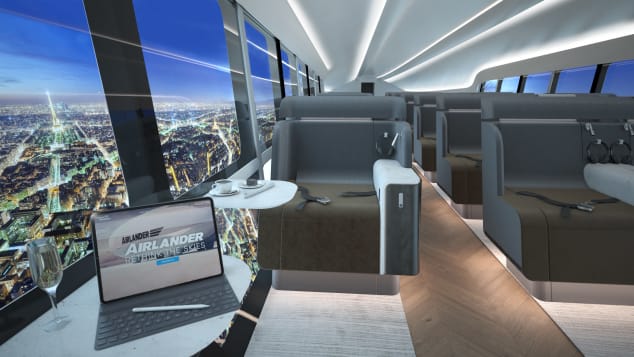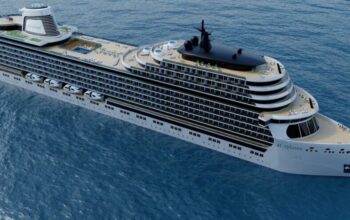Wednesday UK-based company Hybrid Air Vehicles (HAV) released the latest details of its airship, which boasts a far smaller carbon footprint than a conventional passenger plane.
The following written content by Jack Guy
(CNN) — Growing awareness of the climate crisis means conscientious travelers are increasingly looking for alternatives to trips by airplane.
For many, that means traveling by high-speed train, but on Wednesday UK-based company Hybrid Air Vehicles (HAV) released the latest details of its airship, which boasts a far smaller carbon footprint than a conventional passenger plane.


The Airlander 10 aircraft will seat up to 100 passengers and operate with 90% fewer emissions than conventional aircraft, the company said in a press release.
The airship requires less fuel than a conventional aircraft due to a combination of “buoyant lift from helium, aerodynamic lift, and vectored thrust,” according to HAV.
A hybrid electric and jet fuel model will be available by 2025, and a fully electric version by 2030, according to the press release.
HAV released a set of renderings of the cabin interior to show what it’s going to feel like to fly on the Airlander 10, company chief executive officer Tom Grundy told CNN on Thursday.
“As you can see, that’s a big, spacious, accessible cabin,” said Grundy, who emphasized the floor-to-ceiling windows.

“It’s low noise, low vibration, very little in the way of any turbulence effect that people worry about on other aeroplanes.”
The airship boasts an unpressurized cabin, and is built to withstand high and low temperatures, strong winds and even lightning strikes, to the same regulatory standards as other passenger aircraft, says HAV.
Airlander journeys won’t compete with long-haul flights or routes already well-served by high-speed rail connections, said Grundy, but will instead focus on pairing up cities a few hundred miles apart.
Examples include Liverpool to Belfast, Seattle to Vancouver and Stockholm to Oslo, and Grundy also pointed out that the airship would be particularly useful in island nations such as Indonesia, or in remote areas of northern Canada.
The airship has a top speed of 130 kilometers per hour (about 81 miles an hour), and a trip from Liverpool to Belfast — 271 kilometers (168 miles) — would take five hours 20 minutes, according to HAV.
That’s the end-to-end journey time — factoring in check-in and travel to and from city centers — which HAV compares to the four hours 24 minutes it estimates a traveler would spend setting out on a commercial airplane trip or nine hours 23 minutes on the existing ferry service. Read more from CNN.





